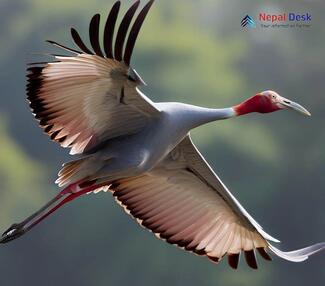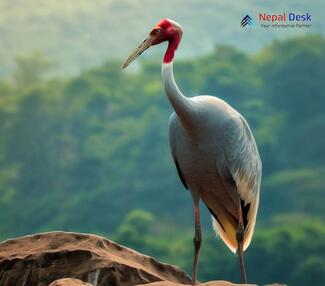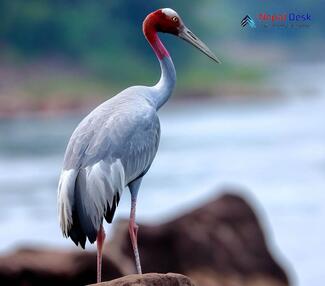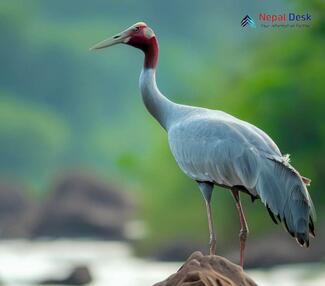The majestic Sarus Crane (Antigone antigone) is an awe-inspiring bird steeped in history, mythology, and natural beauty. From its unique taxonomy to its fascinating features and presence in Nepal, this gentle giant of the avian world has much to offer. In this article, we'll explore the captivating world of the Sarus Crane, delving into its taxonomy, physical features, habitat, diet, and significance in Nepal.
Taxonomic Mystique: Unveiling the Sarus Crane's Lineage
As a member of the Gruidae family and Antigone genus, the Sarus Crane holds a unique place in avian taxonomy. It is the tallest flying bird on earth, standing testament to its grandeur and mystique. Although known by its scientific name Antigone antigone, the bird's common name "Sarus" stems from the Sanskrit word "sáras," meaning "lake" or "water body," alluding to its affinity for wetlands.
Breathtaking Beauty: Physical Features of the Sarus Crane
The soaring stature of the adult Sarus Crane conjures images of elegance and grace. Measuring up to 5.9 feet tall with a wingspan stretching over eight feet, it exhibits several distinctive features that set it apart from other cranes. Its predominantly grey plumage contrasts beautifully with its radiant red head and upper neck. The bare skin on their heads allows them to regulate their body temperature – an essential adaptation for surviving in wetland habitats.
A white patch adorns either side of their grey tail feathers while black primary wing feathers elegantly peek out when they're in flight. Males possess slightly more robust bodies compared to females; however, you'd be hard-pressed to differentiate between the two sexes without closer examination.
Nature's Abode: Habitat Preferences of the Sarus Crane
Preferring shallow wetlands, marshes, and flooded grasslands, the Sarus Crane is highly reliant on these ecosystems to thrive. Found across southeast Asia and northern Australia, these tall waders exhibit incredible adaptability in terms of habitat suitability. In Nepal, Sarus Cranes frequent the Terai plains, Trans-Himalayan wetlands, and habitat reserves like Chitwan National Park.
Sustenance Seekers: The Varied Diet of the Sarus Crane
An opportunistic omnivore, the Sarus Crane enjoys a diverse diet comprising aquatic plants, insects, frogs, crustaceans, snails, mammals like rodents, and even small birds. With their long beaks enabling them to probe and sift through wetland vegetation and mud effortlessly, they can acquire sustenance across multiple food chains.
The Significance of Sarus Cranes in Nepal
In Nepal's unique biodiversity hotspot, the Sarus Crane has garnered significant attention for conservation efforts. Facing threats such as habitat destruction and human disturbance, organizations like Bird Conservation Nepal work tirelessly to protect these stately birds. Meanwhile, locals view the Sarus Crane with a sense of awe and reverence – often featured in regional folklore symbolizing love and fidelity.
Bringing together culture, ecology, and avian splendor – the story of the Sarus Crane (Antigone antigone) offers an enthralling glimpse into a bird like no other. With ongoing conservation efforts championing their cause both in Nepal and beyond its borders, the future looks bright for these gentle giants.




